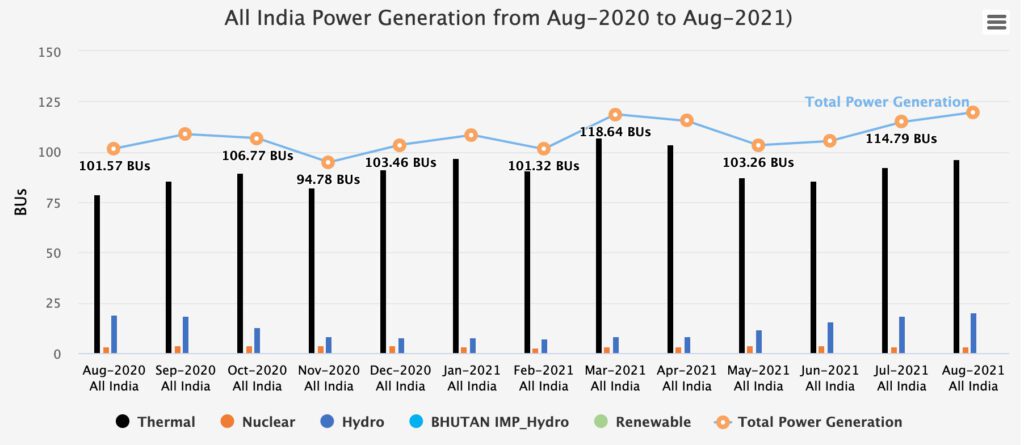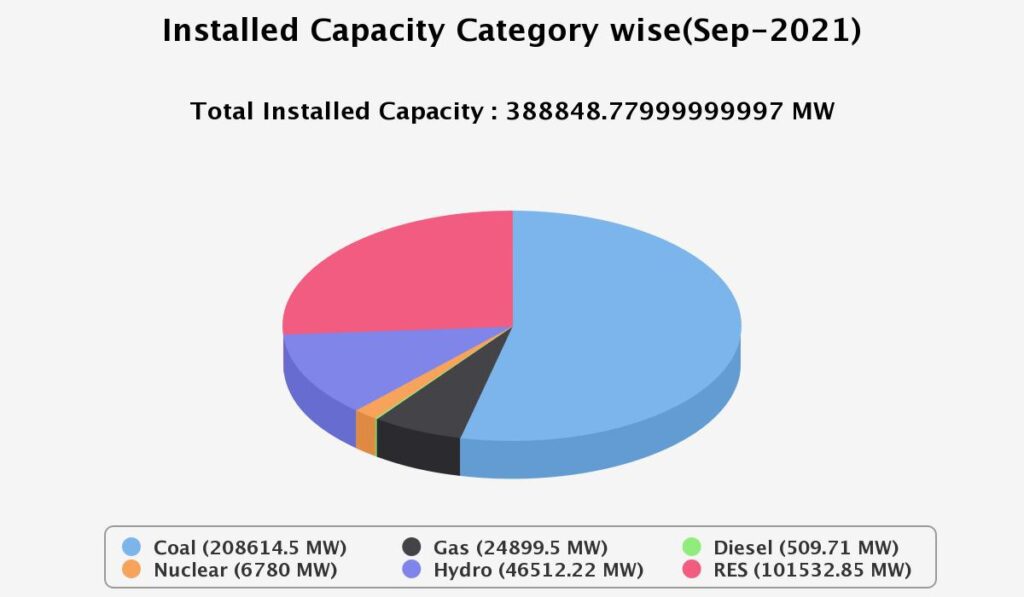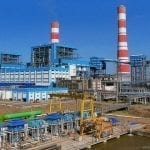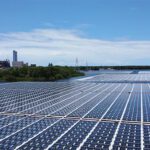India, a nation heavily reliant on coal power, will set out to achieve net-zero greenhouse gas (GHG) emissions by 2070, Prime Minister Narendra Modi pledged in a surprise declaration at the ongoing COP 26 climate summit on Nov. 1.
While India’s central government has yet to issue a detailed plan to achieve the necessary carbon reductions, the nation will kick off its climate ambitions by issuing five aggressive near-term targets.
“First, India will increase its non-fossil energy capacity to 500 GW by 2030,” Modi said in a 12-minute speech (in Hindi) on the first day of the conference in Glasgow, Scotland. “Second, India will fulfill 50% of its energy requirements from renewable energy sources by 2030,” he said. “Third, between now and 2030, India will reduce its total projected carbon emissions by 1 billion tons. Fourth, by 2030, India will reduce the carbon intensity of its economy by 45%. And fifth, by 2070, India will achieve the target of net-zero emissions.”
The five actions, which Modi described as “essential,” will be an “unprecedented contribution by India toward climate action,” he said. India harbors 17% of the world’s population but produces only 5% of the world’s carbon emissions, he noted.
The newly announced climate goals will serve the world’s welfare, but for India, they will underlie challenging ambitions to lift millions of citizens out of poverty and keep the nation on its upward economic trajectory, he said. “Still, India has left no stone unturned to show that it has fulfilled its obligation,” he said. “We are making every effort with determination, working hard, and showing results.”
Net-Zero Could Require a Power Overhaul
According to the Indian Central Electricity Authority’s (CEA’s) most recent data, India generated nearly 80% of its power from thermal sources in September 2021. Most came from its massive 208-GW coal fleet, and a small percentage came from its 25-GW fleet of gas-fired plants. Renewables and hydropower made up around 38% of its total installed capacity of 388.8 GW, but hydropower generation constituted only 17% of its total generation, while non-hydro renewables generated a much smaller fraction.

In September, notably, the country began grappling with “unprecedented” coal supply issues, which prompted the Ministry of Power to direct hydropower generators to defer scheduled maintenance through October. At the end of October, Coal and Mines Minister Pralhad Joshi announced the government had accelerated coal dispatch to power plants, but analysts suggested coal plant stock levels remained precarious over the six months.
On Monday, Modi did not call attention to the nation’s critical power supply woes or efforts to ensure reliability. He did, however, highlight India’s rapid additions of renewable capacity. “Today, India is at number four in the world in installed renewable energy capacity,” he noted. “India’s non-fossil fuel energy has increased by more than 25% in the last seven years. And now it has reached 40% of our energy mix.”

In his speech, Modi said that carbon reductions by its railways, an LED bulb campaign, and a build out of solar infrastructure to support resiliency would aid net-zero efforts.
However, he also noted actionable finance will be key to achieving key goals, Firm commitments from developed countries would be integral for meaningful progress, he suggested.
“All of us are aware of the reality that the promises made so far on climate finance have only proved to be hollow,” Modi lamented. “India expects developed countries to provide climate finance of $1 trillion at the earliest,” he said. “Today, it is necessary that as we track the progress made in climate mitigation, we should also track climate finance. Proper justice would be that countries that do not live up to their promises made on climate finance must be pressured too,” he said.
Vietnam, Thailand, Brazil Set Carbon Goals
India’s ambitious goals reportedly injected new life to the climate summit. So far this week, several other substantial emerging economies have pledged to go net-zero or achieve carbon neutrality.
Vietnamese Prime Minister Chinh Minh Pham on Monday said his country will seek to reduce its net GHGs to zero by 2050. “Although we are a developing country that started industrialization only over the past three decades, Vietnam is a country with advantages in renewable energy,” he said.
Brazil’s Environment Minister Joaquim Leite said his country, which gets the bulk of its power from hydropower, will seek carbon neutrality by 2050. Leite presented “a new, more ambitious climate target, going from 43% to 50% by 2030, and carbon neutrality by 2050.”
Thailand’s Prime Minister Prayuth Chan-Ocha also set a carbon dioxide neutrality goal by 2050. Thailand had previously set a 2065 goal to reduce all GHGs to net zero by 2065.
Nepal, meanwhile, pushed up its economy-wide net-zero target to 2045, five years earlier than its previous goal.
—Sonal Patel is a POWER senior associate editor (@sonalcpatel, @POWERmagazine).










